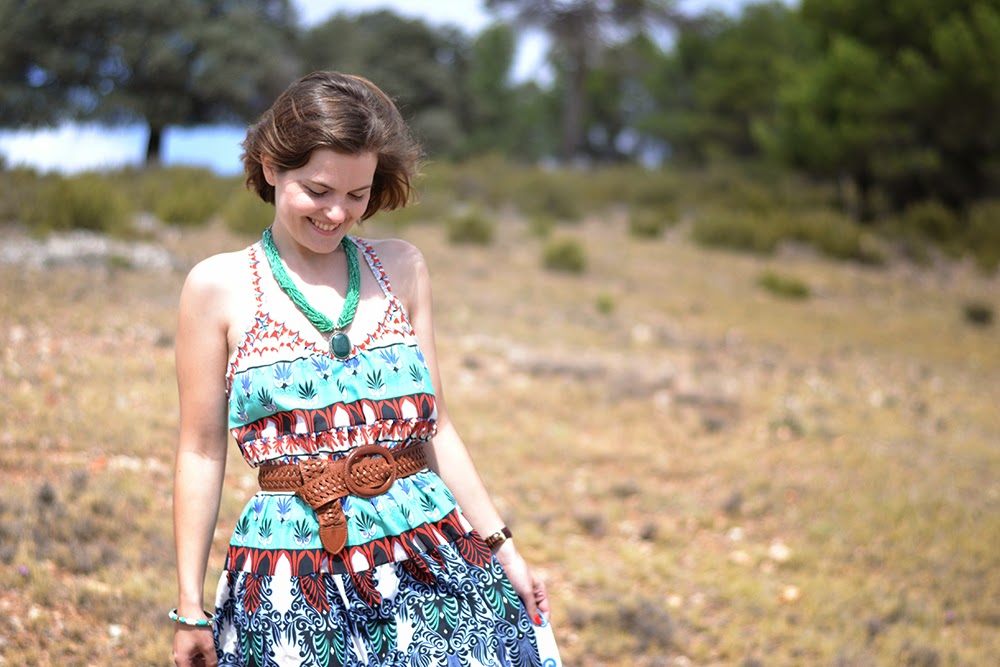



2.Faites coïncider les marges à l’encolure.
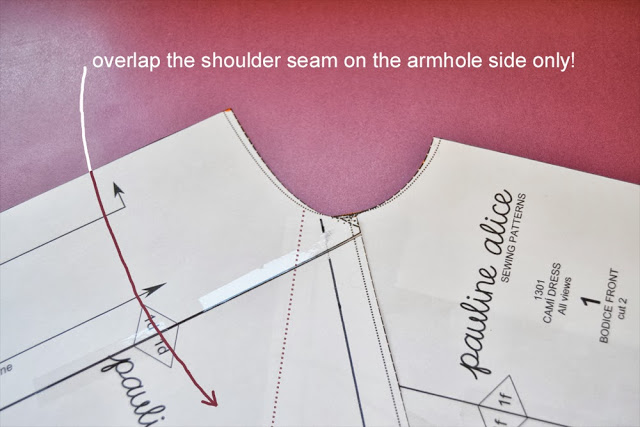
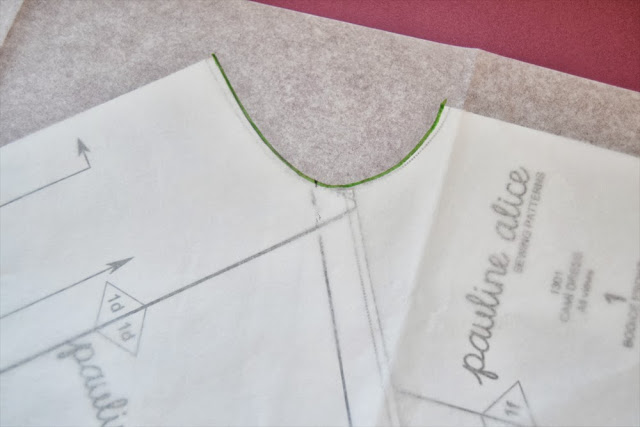
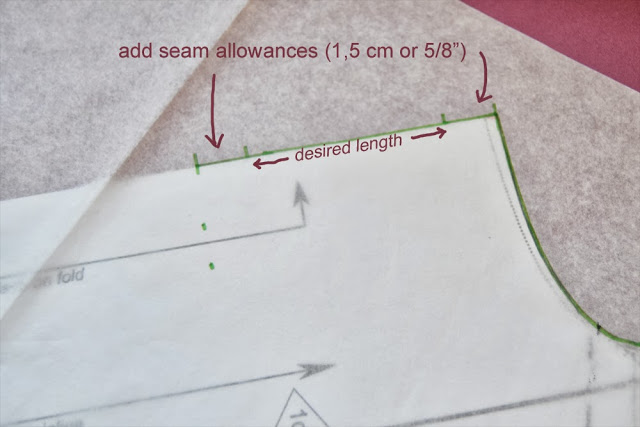
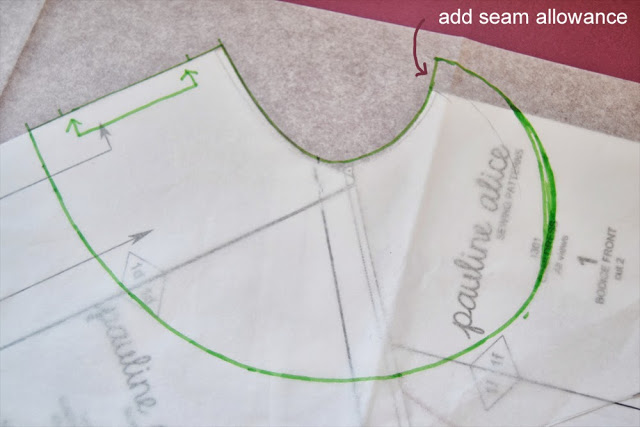
Here is the hoop-skirt: the most important part of the costume as it support the whole dress. The volume depends of how many hoops you add and the width. Here is how I made mine:
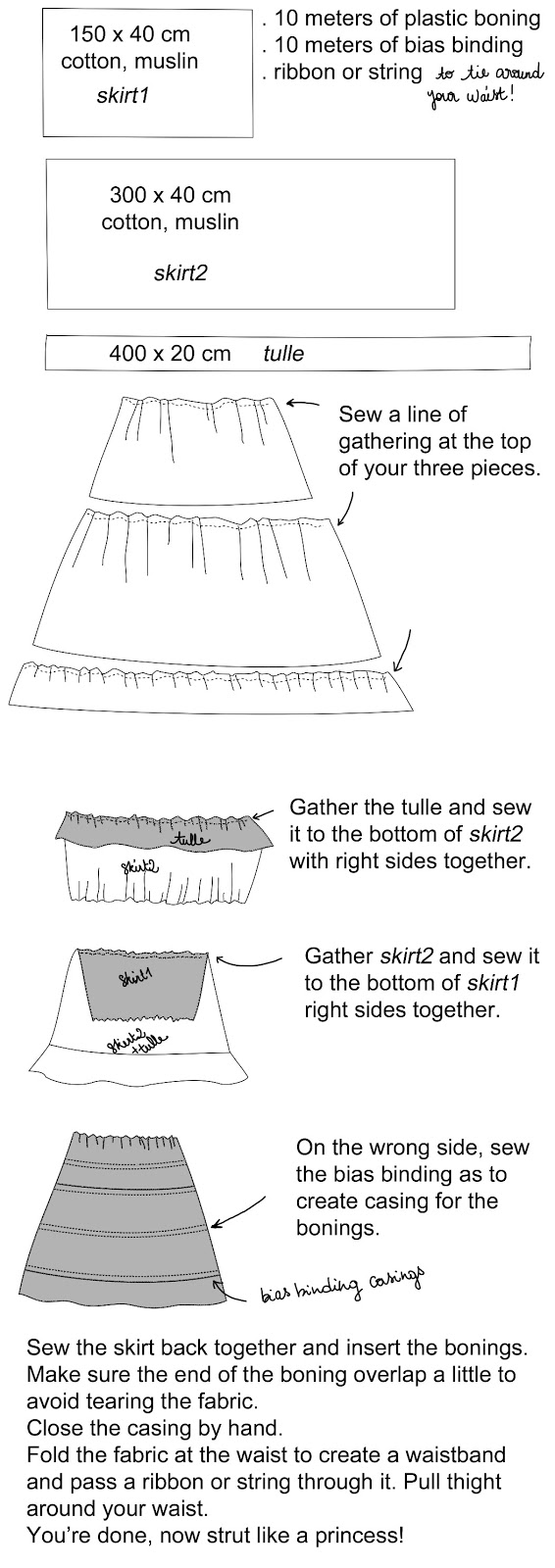
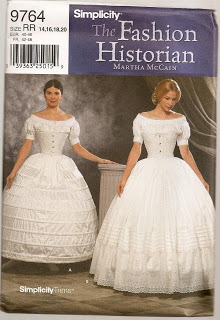
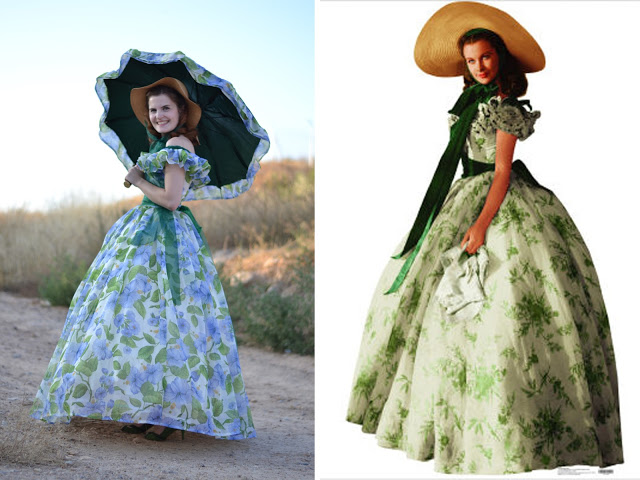
That’s the last dress I made: the famous barbecue dress worn by Scarlett O’Hara in Gone with the wind.
I made it for a special occasion (I don’t wear that kind of dresses on a daily basis, sorry to disappoint you): a costume birthday party! How cool is that? I love costume parties…
And as the theme was the cinema, I couldn’t think of a better heroine than Scarlett.
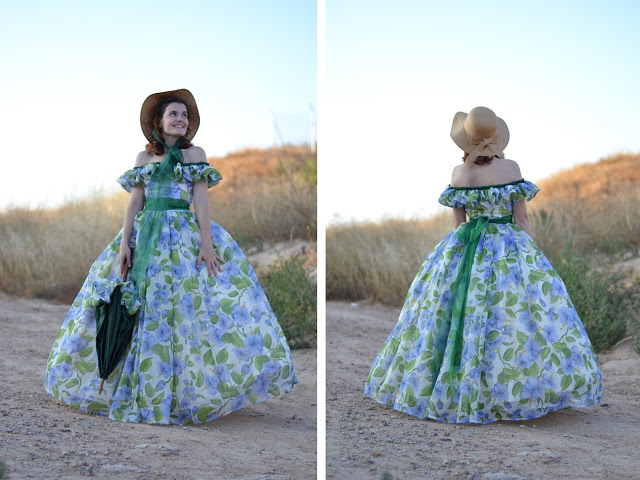
The most important part of the costume is the foundation: a corset, a hoop-skirt and an underskirt. I will explain all those parts in the following post.
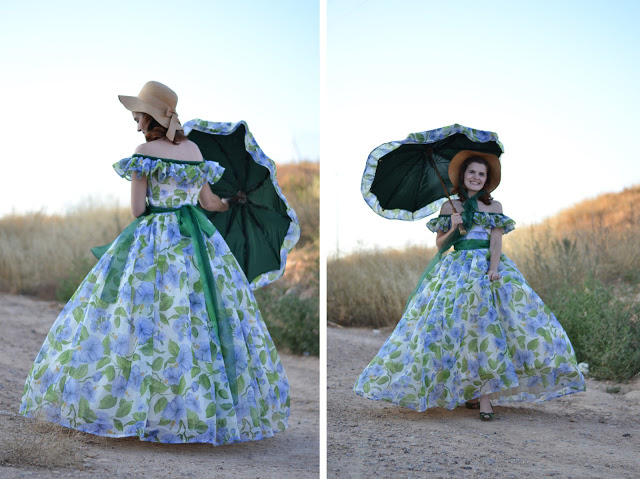
I leave you with a short excerpt from the movie where you can see the dress and the foundation worn by Scarlett I used as inspiration.
See you on Friday for the details post.
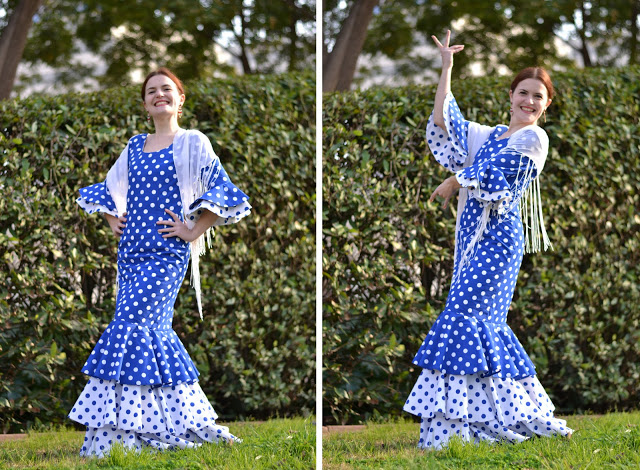
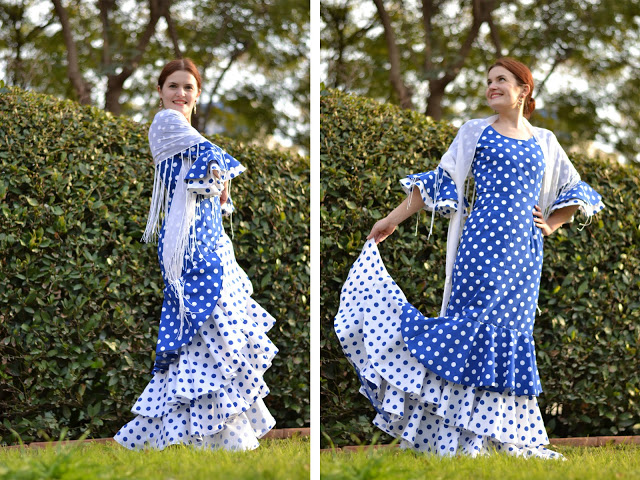
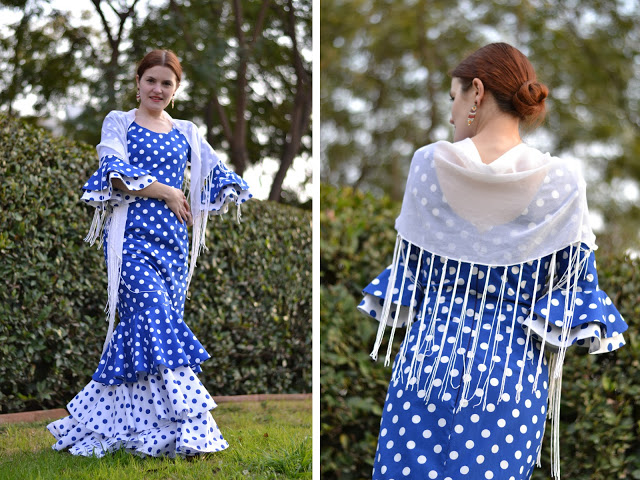
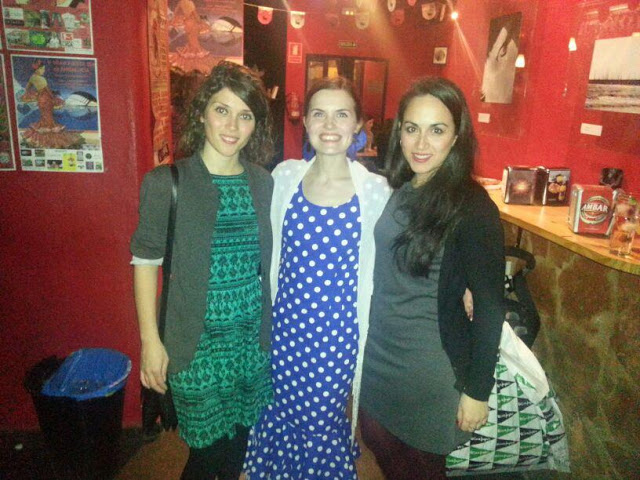
…………………………………………………………………………………………………………………………………………….
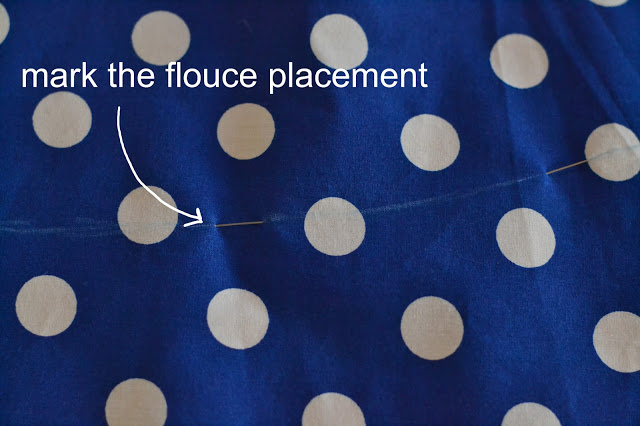 3-Here is a drawing (very bad!) I made to explain how to place the flounces on the skirt. You see that the first flounce is sewn right side up and the following ones wrong side up with the flounce facing upward (that way, the seam allowance is hidden nder the flounce when folded).
3-Here is a drawing (very bad!) I made to explain how to place the flounces on the skirt. You see that the first flounce is sewn right side up and the following ones wrong side up with the flounce facing upward (that way, the seam allowance is hidden nder the flounce when folded).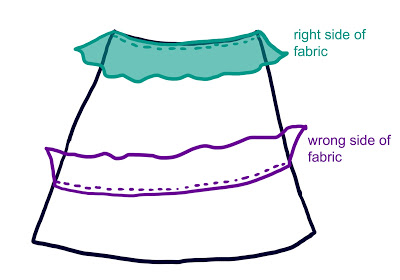
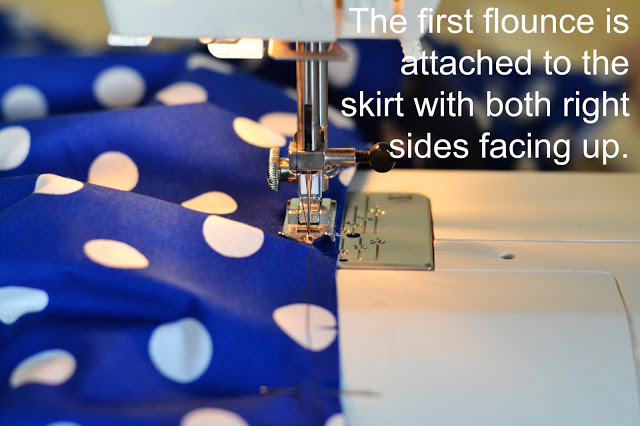
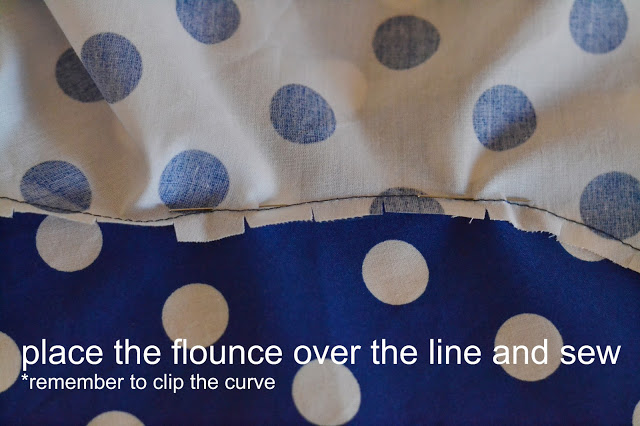 4-Repeat step 7 of the previous post to sew the back the dress (remember to sew each flounce separately).
4-Repeat step 7 of the previous post to sew the back the dress (remember to sew each flounce separately).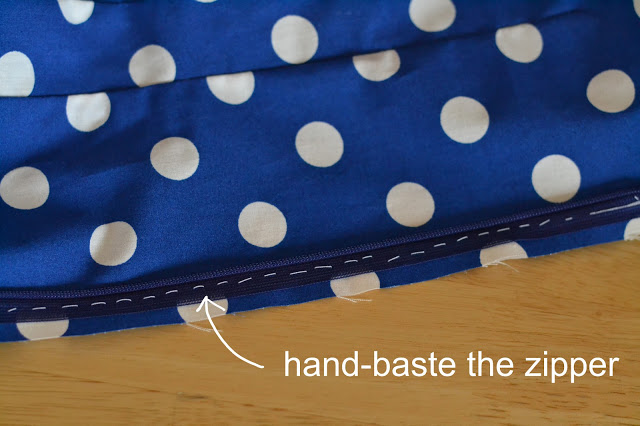 6-Hem the skirt and the flounces as you choose (decorative binding, turn in hem…).
6-Hem the skirt and the flounces as you choose (decorative binding, turn in hem…).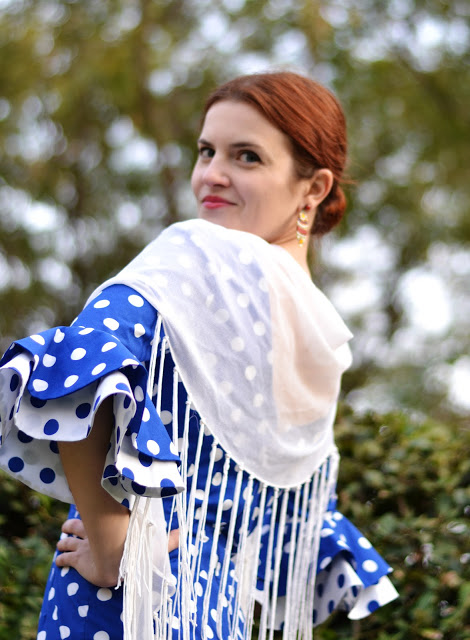

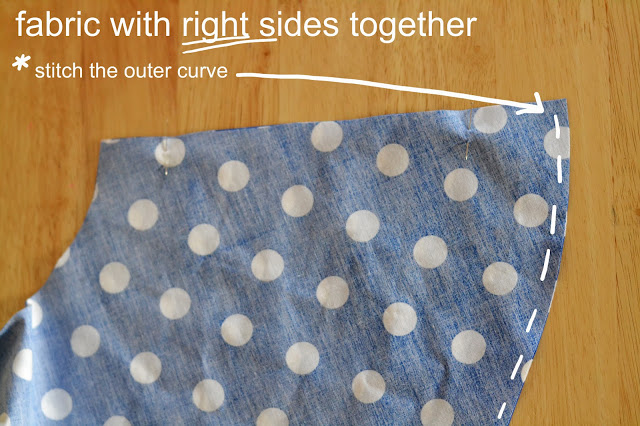
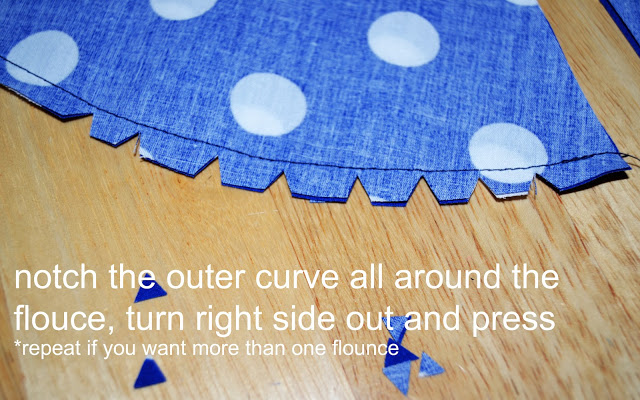 2-Remember to press flat (if the curve isn’t round, notch more closely but be careful not to cut into your row of stitches).
2-Remember to press flat (if the curve isn’t round, notch more closely but be careful not to cut into your row of stitches).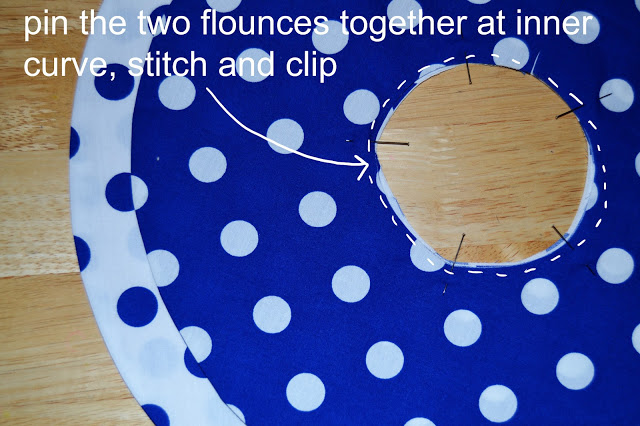
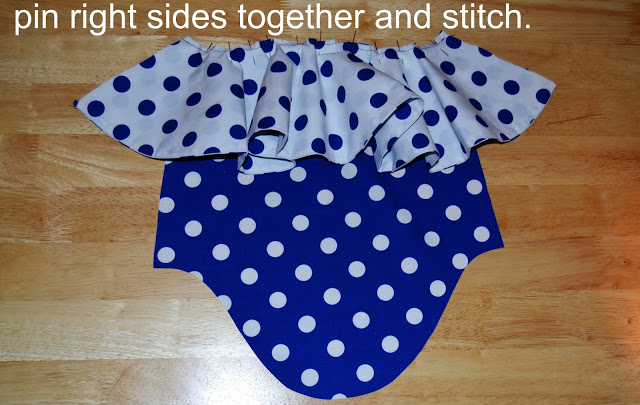
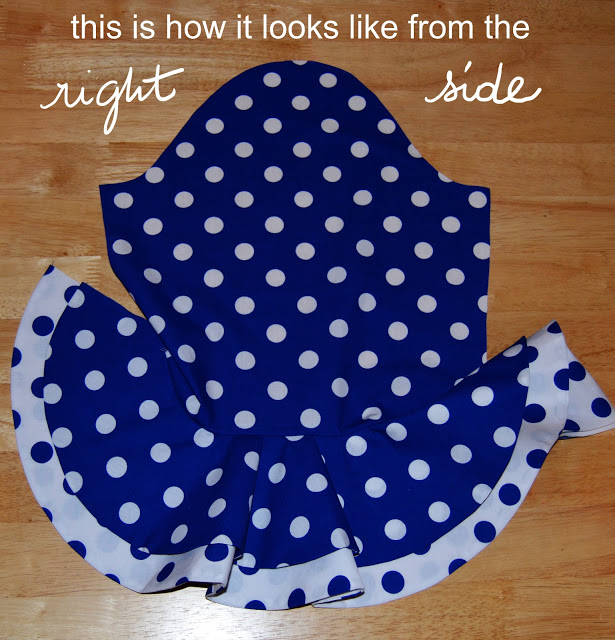 7-Stitch the flounces separately, press the seam allowances open, finish the edges as you prefer (zigzag, serger, bias binding…).
7-Stitch the flounces separately, press the seam allowances open, finish the edges as you prefer (zigzag, serger, bias binding…).


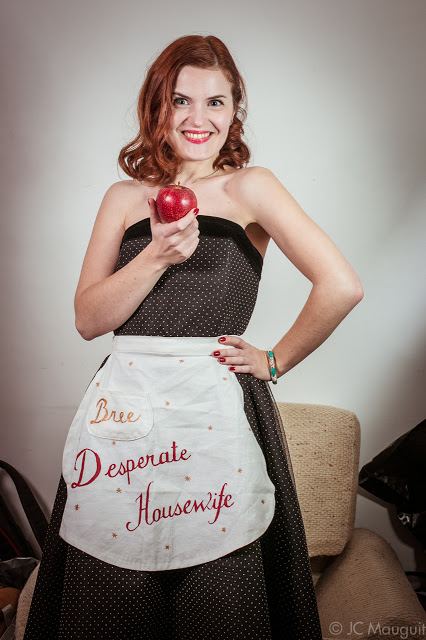 |
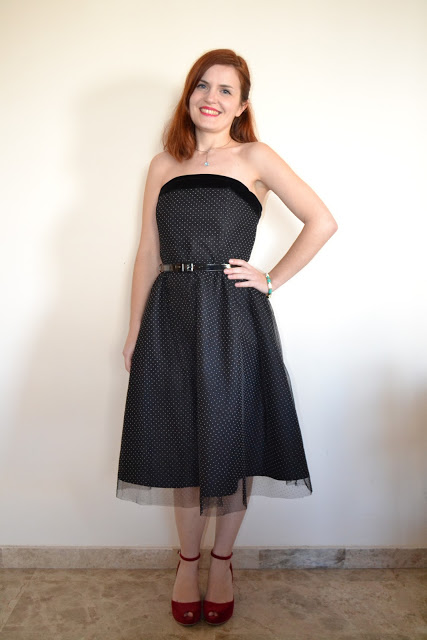
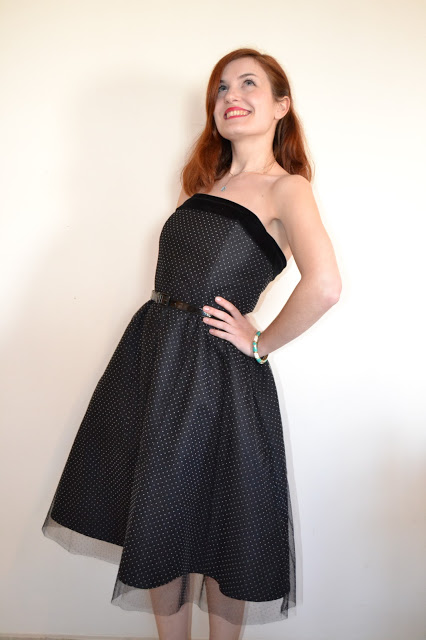
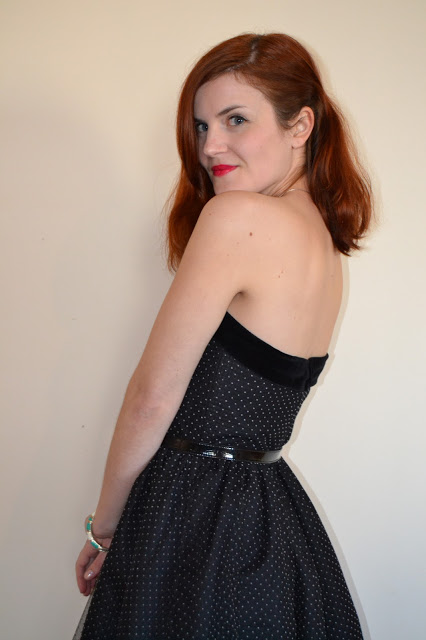
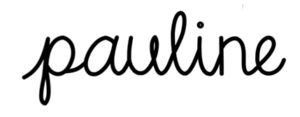
Je suis ravie de vous présenter mon chef-d’oeuvre: le manteau Dior!
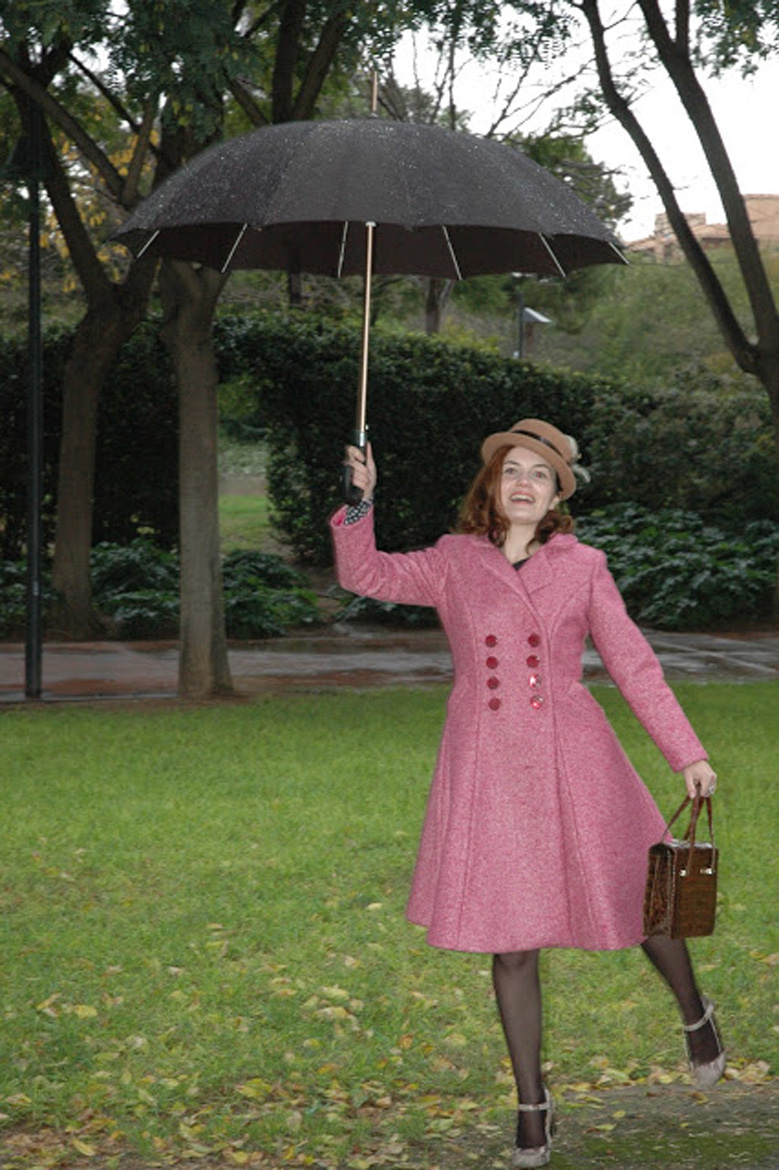
J’ai réalisé le patron du manteau Dior à partir d’un autre manteau que j’ai fait cet automne. J’ai fait quelques changements à la base: une taille plus accentuée, un bas beaucoup plus volumineux pour une silhouette années 50 et un col tailleur arrondi.
Ce qui m’a vraiment aidé dans la réalisation de ce manteau, c’est un cours Craftsy acheté cette année. Il s’agit du cours « Starlet Suit Jacket » animé par Gretchen Hirsh du blog Gertie’s blog for better sewing. Je suis fan de son blog et de son livre, j’ai donc acheté le cours. Bien que n’ayant pas réalisé la veste comprise dans le cours, j’ai apliqué presque toutes les techniques expliquées pour la réalisation de mon manteau. J’ai donc appris à entoiler mon tissu, faire des poches paysannes, des boutonnières passepoilées, coudre des épaulettes…
Quelques détails: j’ai entoilé les devants et les côtés avec de l’entoilage thermocollant car l’entoilage tailleur me faisait un peu peur (au niveau technique et surtout au niveau temps), ja’i pu aussi apprendre à faire des cigarettes de manche pour soutenir ma tête de manche.
Le manteau s’appelle Dior car j’ai utilisé un magnifique lainage de cette marque. Il est très épais (double face) et chaud et doublé avec une soie du même ton.J’ai bien cru que ma machine allait rendre l’âme plusieurs fois à cause de l’épaisseur, surtout au niveau du col!
C’est mon projet le plus abouti aussi bien au niveau patronage que couture, j’en suis vraiment très fière! Les heures passées ont valu la peine!
Et surtout, quoi de mieux qu’un manteau rose fuschia pour égayer une journée pluvieuse?
J’ai bien profité du beau temps de Valence dans ma nouvelle robe faite à partir d’un patron maison. Elle est faite pour les promenades dans la ville, les ballades à vélo, les pique-niques et les soirées fraîches de fin d’été.
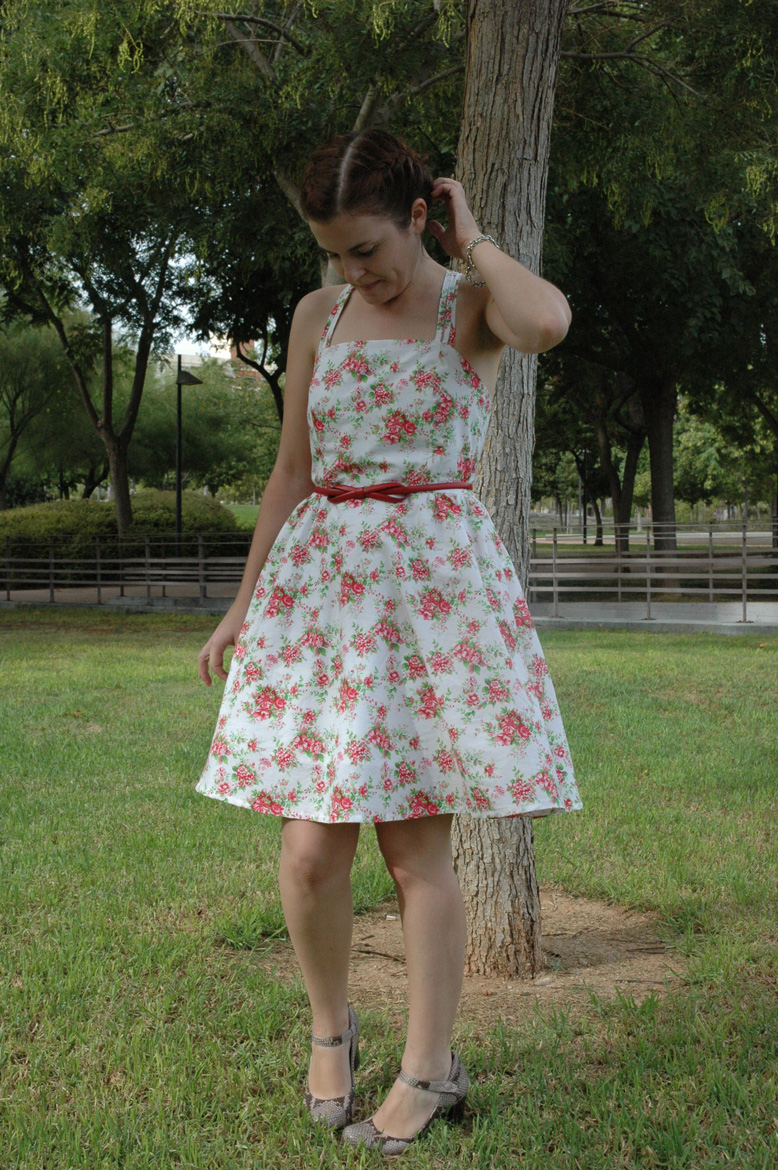
J’avais en tête cette forme de robe depuis un petit bout de temps et je me suis décidée à en faire le patron. Le corsage est composé de découpes princesses sur le devant, un dos d’une seule pièce, une fermeture écalir sur le côté. Quand à la jupe, il s’agit d’un rectangle avec des fronces réparties sur les côtés et le dos. Les bretelles croisées ont été faites avec un appareil à biais que je viens d’acheter (comment ai-je pu m’en passer?).
Bien qu’un peu transparent, ce coton feuri est vraiement très joli et agréable à porter. J’ai décidé de doubler la robe entièrement!
